7-Day Nepal Golden Triangle Tour: Kathmandu, Pokhara, Nagarkot & Safari in Chitwan
So the deal here is , if you’ve only got a week and want the real taste of Nepal—like all of it, in one go—this 7-day Nepal Golden Triangle Tour is your golden ticket. We’re talking ancient temples in chaotic Kathmandu, soul-healing mountain views in chill Pokhara, jungle safaris in Chitwan where rhinos roam like they own the place, and the kind of sunsets in Nagarkot that’ll burn into your memory. This isn’t just another hop-on, hop-off sightseeing circuit—it’s the best 7-day tour in Nepal if you want to cram culture, nature, wildlife, and those panoramic Himalayan vibes into one punchy, unforgettable trip. Whether you’re chasing bucket list sights or just wanna slow down in the hills with a cup of masala tea, this triangle tour’s got your back. No trek boots needed. Just show up, breathe it in, and let Nepal do the rest.
The 7-day Nepal Golden Triangle Tour is basically the ultimate sampler platter for anyone who wants to mainline Nepal without, you know, getting blisters or losing a toenail. You kick things off in Kathmandu, which is basically chaos in stereo—temples older than your grandma, spinning prayer wheels, incense everywhere, and people just vibing in courtyards that have seen more history than most textbooks. It’s loud, it’s messy, it’s awesome. The spiritual spots? Pashupatinath, Boudhanath—they’re not just stuffy “must-sees,” the whole place feels alive, like you accidentally crashed a centuries-old block party.
And then—bam—Pokhara. Total vibe shift. Suddenly, you’re trading the city clatter for lazy lakes, boats drifting around, and those Himalayas just casually flexing in the background. Catching the sunrise at Sarangkot? Unreal. The Annapurnas go full pastel mode and, honestly, it’s tough not to just stare and drool a little.
But wait, it gets weirder. You drop out of the mountains and hit Chitwan, which is basically Nepal’s answer to Jurassic Park minus the dinosaurs (but hey, rhinos and elephants aren’t a bad consolation prize). Jeep safaris, jungle vibes, and if you’re lucky, you might spot a tiger—at which point you’ll probably lose your mind and your camera battery.
Finally, you wrap up in Nagarkot, which is perched so high you’re basically hanging out with the clouds. Sunsets here? Chef’s kiss. On a clear day, Everest even shows up for the grand finale, just to remind you who’s boss.
The crazy part? You’re bouncing from gritty city markets at 1,400 meters, to lowland jungles at 415 meters, and then up to mountain viewpoints above 2,000 meters—all in a week. No altitude headaches, no slogging up hills for hours, just a highlight reel of Nepal’s greatest hits. It’s perfect if you’re traveling with family, you’ve never been before, or you just want to soak up all the good stuff without breaking a sweat. One week, a lifetime’s worth of bragging rights.
What Nature Bless You With During This Tour?
Look, you don’t have to go full monk and vanish into the Himalayas to get a taste of Nepal’s wild side. Trust me, the place is basically a nature mixtape, blasting every track as you bounce through this 7-day trip. One minute you’re shivering in Nagarkot’s pine forests, the next you’re sweating in Chitwan’s steamy jungle. How does one country squish so much variety in? Magic, probably.
So, Nagarkot. It’s perched up at just over 2,000 meters—which is high enough to make your city lungs complain, but not so high you need to start popping altitude pills. Mornings? Cold, yeah, but they come with mist creeping through the trees and birds losing their minds with song. Oaks and rhododendrons are everywhere, and if you hit it in spring, the colors are straight out of a Bob Ross fever dream—pinks, reds, whites, the whole bouquet. Keep your ears open for the Himalayan cuckoo (seriously, it sounds haunted), and if you’re lucky, a kalij pheasant might play hide-and-seek in the underbrush. Oh, and on a clear day? Everest just photobombs your teacup. No big deal.
Then it’s down to Pokhara. The vibe changes fast—less frigid air, way more green. The hills here are all ferns, bamboo, wildflowers, and the trails by the lake? Chef’s kiss. Kingfishers zoom over Phewa Lake like they’ve got somewhere important to be, butterflies follow you around like you’re starring in an indie music video, and honestly, even the most random village path looks ready for its close-up.
But nothing—and I mean nothing—preps you for Chitwan. This isn’t your average “look, a squirrel!” kind of jungle. It’s humid, loud, and absolutely packed with life. Chitwan National Park is basically Nepal’s answer to the Lion King, minus the musical numbers. You’ve got the unicorn of the rhino world (yep, the one-horned kind), gangs of Rhesus monkeys doing parkour, and tiger tracks that make you check your shoelaces twice. Hop in a jeep, duck under elephant grass taller than your landlord’s ego, and let a naturalist point out every chirp, snap, and shadow. Above you? Over 500 kinds of birds—everything from neon-blue rollers to hornbills with helmets on. It’s a whole circus up there.
The wildest part? You’re not even trying that hard. Nature just happens to you. In a week, you bounce from chilly mountain woods to leafy hills to full-on Tarzan territory, each zone with its own smells, sounds, and attitude. For anyone who loves wild places but hates lugging crampons and oxygen tanks, this is Nepal’s best-kept secret. No epic trekking saga required—just show up and let the country hit you with one of the biggest natural glow-ups on the planet.
Complete Route Breakdown: Kathmandu to Pokhara, Chitwan Safari & Nagarkot Sunrise in 7 Days
Nepal’s not a country you simply “visit”—it’s one you move through, and it moves right back through you. The 7-Day Golden Triangle Tour strings together some of the nation’s most iconic places — Kathmandu, Pokhara, Chitwan, and Nagarkot — into a perfectly paced loop that doesn’t rush but never drags. It’s not about checking boxes; it’s about soaking in contrasts — sacred chaos to serene jungle, lakeside calm to mountaintop silence.
Your journey kicks off in the cultural powerhouse of Kathmandu, where you’re dropped straight into a living museum. This isn’t your typical “capital city.” It’s a wild mosaic of ancient temples, chaotic alleys, fluttering prayer flags, and sadhus striking yogic poses beneath 1,000-year-old stupas. The UNESCO heritage circuit here is unreal — places like Pashupatinath, Boudhanath, and Patan Durbar Square don’t just tell history; they chant it at you. It’s loud, sacred, overwhelming… and absolutely unforgettable.
From there, you take a short flight to Pokhara, and suddenly everything shifts. The air gets softer, the pace slows, and the mountains seem to breathe just behind you. This lakeside city is Nepal’s chill-out zone — but don’t mistake calm for boring. Whether you’re sipping coffee on Phewa Lake, paragliding off Sarangkot Hill, or hiking up to the Peace Pagoda, the vibe is equal parts adventure and peace. And the views? Let’s just say if the Annapurna range doesn’t stir something inside you, check your pulse.
The pulse picks up again as you descend into the subtropical lowlands and roll straight into Chitwan National Park, one of the best places in South Asia for real-deal jungle safaris. Think: towering elephant grass, dugout canoe rides on crocodile-filled rivers, and sunset jeep drives where rhinos might just wander past your lens. This is raw, primal Nepal — a world away from the mountains, where nature is king and humans are just guests.
Then, just when you think you’ve seen every side of Nepal, a quick flight brings you back toward the Kathmandu Valley, where you’re whisked off to Nagarkot, the serene hilltop escape that gives you one last jaw-dropping panorama. At over 2,000 meters, Nagarkot serves up the Himalayas on a silver platter — sunrises here hit different, casting gold across Everest, Langtang, and Dhaulagiri while the world below is still stretching awake.
This route doesn’t just cover ground — it links together Nepal’s soul in layers. From spiritual centers to natural wonders, sacred rituals to jungle roars, you’ll ride planes, jeeps, boats, and your own emotions through one of the most densely packed, culturally textured itineraries out there. No altitude sickness, no rushed treks — just a curated taste of everything that makes Nepal the quiet giant of global travel.
🌍 Why the 7-Day Nepal Golden Triangle Tour Feels Like Three Trips Smashed Together
Ever had a trip mess with your sense of time? Like, one day you’re dodging monkeys outside a temple that smells like ancient incense, and the next thing you know, you’re chilling by a river while a rhino takes a casual morning stroll. That’s what this tour is. Seven days in Nepal, but it honestly feels like you’ve traveled through three totally different worlds—Kathmandu’s wild, spiritual chaos; Pokhara’s chilled-out lakes and mountain views; then, outta nowhere, you’re bouncing around Chitwan’s jungle like you’re in your own Nat Geo episode. Oh, and you wrap it all up with a sunrise in Nagarkot that’ll have you rethinking everything. It’s a whiplash… in a good way.
You get temples, jungle, Himalayas, and lakes, all in one go. And guess what? No death-march trekking required. This is for people who want max Nepal, minimum logistics. Like, if Nepal dropped a greatest hits album, this would be it. Zero filler, all bangers.
✅ Why This 7-Day Nepal Tour Actually Rewards You With
- Get lost in Kathmandu’s wild energy—UNESCO temples everywhere. You’ve got the massive peace-dome of Boudhanath, the burning ghats and holy men at Pashupatinath, and the monkey mafia running Swayambhunath up on the hill. Total sensory overload, but kinda magical.
- That quick flight to Pokhara? Not your average snooze-fest. Cloud surfing with front-row seats to the Annapurnas and that legendary Fishtail peak. You’ll want a window seat. Trust me.
- Lakeside Pokhara is a vibe. Boats drift, the sun’s lazy, and the mountains just sit there looking unreal. Walk to the Peace Pagoda if you’re feeling ambitious… or just drink a lassi and stare at the water. No wrong move.
- Jump in a jeep and get deep into Chitwan. This is not a zoo, my friend. Rhinos, crocodiles, birds that look like they belong on another planet—if you’re lucky, maybe even a tiger (but don’t hold your breath).
- Float down the Rapti River before breakfast. It’s misty, weirdly quiet, and you might spot a crocodile eyeballing you from the banks. Nature’s alarm clock.
- Drag yourself out of bed for the sunrise at Nagarkot. It’s cold, yeah, but when the sun lights up the Himalayas, you’ll forget about your frozen fingers. If Everest shows up? Major bragging rights.
- Snack on real Nepali culture—watch a Tharu stick dance under the stars, sip sweet tea in Bhaktapur where the buildings are older than some countries. Nothing staged, just daily life doing its thing.
- No hiking boots needed. This is soft adventure—enough action to feel alive, but with legit beds and hot showers at the end of the day. Bring your mom, your partner, your weird uncle—everyone’s happy.
- Handpicked hotels and heritage lodges. You wake up to mountain views, not honking horns. Cozy beds, hot food, and staff who actually seem glad you’re there. Feels like the good life.
Nepal’s Golden Triangle: The Real Deal on When to Go
Alright, buckle up—because Nepal’s Golden Triangle (Kathmandu, Pokhara, Chitwan, Nagarkot) isn’t some glossy brochure fantasy. It’s chaotic, soul-stirring, and wildly dependent on when you roll up. Pick wrong, and you’ll be sweating through Kathmandu’s smog or dodging monsoon leeches in Chitwan. Nail it? You’ll catch Himalayan sunrises so sharp they’ll ruin other mountains for you.
Here’s the breakdown—season by season, pain point by pain point.
Autumn (Sept–Nov) – The GOAT Season
"That time I thought Everest was a Photoshop job… until Nagarkot."
Why it is worth it:
- Kathmandu’s temples glow in golden-hour light, minus the pre-monsoon dust haze. Pro tip: Hit Swayambhunath at dawn—monkeys are chill, tourists aren’t.
- Pokhara’s lake is mirror-flat. Paragliding? Yes. But skip the overpriced "sunset cruises"—rent a paddleboat and sneak a Gorkha beer instead.
- Chitwan’s jungles are alive. Saw a rhino 10 feet away on a canoe ride (guide whispered, "Don’t sneeze"). Grass is low, wildlife isn’t hiding.
What it can be:
- Crowds: Packed. Book hotels early (especially Nagarkot—sunrise views sell out).
- Festivals: Dashain means everything shuts for 3 days. Plan around it or join the chaos.
- Verdict: Best for first-timers, photographers, and festival junkies.
Spring (Mar–May) – Rhododendrons & Rhinos
"When the jungle heat hit 35°C, I became one with the fan."
Why it’s rad:
- Kathmandu Valley is a flower bomb. Bhaktapur’s alleys smell like incense and orange blossoms.
- Pokhara’s skies are hazy but warm. Perfect for actually swimming in Phewa Lake (monsoon makes it sketchy).
- Chitwan’s birds go nuts. Spotted a kingfisher so blue it looked Photoshopped.
Watch out:
- Heat: Chitwan feels like a sauna by May. Morning safaris or bust.
- Haze: Annapurna views? Hit-or-miss. Early March = clearer.
- Verdict: Ideal for nature nerds, birders, and heat-tolerant adventurers.
Winter (Dec–Feb) – Quiet & Freezing Toes
“Woke up to -2°C in Nagarkot. Then the Himalayas appeared like a mirage. Worth it.”
Why it’s underrated:
- Kathmandu’s streets are yours. No elbow fights at Pashupatinath.
- Nagarkot’s sunrise? Crisper than autumn. Bring layers—hotel blankets are for amateurs.
- Chitwan’s secret: It’s warm (25°C!). Saw more rhinos than tourists.
Downsides:
- Cold: Pokhara’s lakeside cafés empty by 8 PM. Good luck finding nightlife.
- Limited routes: Some mountain flights get canceled (clouds love winter).
- Verdict: For solitude seekers, photographers, and masochists who don’t mind frostbite.
Monsoon (Jun–Sep) – Mud, Magic & Misery
"Trekked to a ‘hidden’ waterfall. Spoiler: Everything’s hidden under 3 feet of mud."
Why you’d bother:
- Kathmandu’s vibe: Mist + chai + empty Durbar Square = next-level mood.
- Chitwan’s jungle turns into Avatar. Lush, loud, and leechy (gaiters = lifesavers).
Hard truths:
- Rain: Daily. Delays? Guaranteed. Pokhara’s paragliding? Often grounded.
- Bugs: Mosquitoes in Chitwan treat DEET like ketchup.
- Verdict: Only for rain romantics, budget backpackers, and people who think ‘adventure’ means trench foot.
Final Call: What’s Your Travel Personality?
- "I want the Instagram dream" → Autumn.
- "I’ll trade clear skies for flowers & no crowds" → Spring.
- "I hate people & love pain" → Winter.
- "I laugh in the face of monsoons" → June.
Nepal’s Golden Triangle: The Real Deal on Food & Beds
Listen up, hungry traveler—this ain’t no resort circuit. You’ll eat where the locals eat, sleep where the porters crash, and maybe score a hot shower if the gods of hydro are smiling. Here’s the unfiltered truth about grub and lodging from Kathmandu to Chitwan.
Teahouses & Hotels: What You’re Actually Signing Up For
Kathmandu:
- Budget: Guesthouses in Thamel with "mattresses" that’ve seen more backpackers than a Kathmandu flea market. Pro tip: The $10/night places smell like $10/night. Spring for $25—you’ll get WiFi that sometimes works.
- Bougie Pick: Heritage stays in Patan (think: 200-year-old Newari houses with actual charm). Yes, they cost more than your last Tinder date. Worth it.
Pokhara:
- Lakeside Rule: The closer to Phewa Lake, the pricier (and noisier). Avoid "party hostels" unless you enjoy dubstep at 3 AM.
- Hidden Gem: Tibetan-run guesthouses up in Sarangkot—basic but wake up to Annapurna views without the tourist hordes.
Chitwan:
- Jungle Lodges: Think "glamping" but with more geckos on the walls. Some have A/C (monsoon = sweatbox mode).
- Pro Move: Book a Tharu homestay. You’ll eat legendary dal bhat on a floor mat, surrounded by chicken. Authentic? Hell yes. Comfortable? Debatable.
Nagarkot:
- Sunrise Tax: Every hotel claims "best Himalayan view." Truth? The higher you go, the thinner the walls (and blankets). Bring thermals.
- Food: From "Holy Spice" to "Why Is This Pizza Green?"
Kathmandu:
- Street Eats: Momo stalls = life. Skip the fancy spots—the alley guy with the dented steamer makes them better. "Special momo" means buffalo. Don’t ask.
- Tourist Traps: Every menu has "yak steak." It’s usually goat. You’ve been warned.
Pokhara:
- Lakeside Scene: Israeli shakshuka, banana pancakes, and way too many "Mexican" places run by Nepalis who’ve never seen a taco.
- Local MVP: Newari kwati (sprouted bean stew). Tastes like home if your home is a spice bomb.
Chitwan:
- Jungle Rules: Buff buffets (that’s buffalo, not "all-you-can-eat"). Tharu-style fish curry = next-level, but check for bones unless you like ER visits.
- Weirdest Dish: "Jungle chicken" (free-range = code for "tough as trekking boots").
Nagarkot:
- Hotel Food: Overpriced and underwhelming. Pack Snickers.
Hygiene: AKA "How Not to Get Delhi Belly"
- Water: Bottled only. Even for brushing teeth. That one reckless decision? That’s how your trip becomes a toilet pilgrimage.
- Veggie Rule: If it’s raw, it’s risky. Salads = Russian roulette unless you’re at a 5-star (and why are you here then?).
- Spice Level: "Nepali spicy" isn’t "tourist spicy." Tears are optional but likely.
Comfort Level by Altitude (Mental & Physical)
- Kathmandu (1,400m): Oxygen’s fine, but pollution isn’t. Pack a scarf or cough like a local.
- Pokhara (800m): Lakeside = easy living. Hangovers hit harder though (blame the altitude + cheap rum).
- Chitwan (150m): Hotter than your ex’s revenge. A/C = mythical creature outside $$$ lodges.
- Nagarkot (2,195m): Nights get cold. Hotels sell "heating" like it’s gold. It’s not.
Final Survival Tips
- Coffee Snobs: Bring instant. "Nepali coffee" = 90% sugar, 10% despair.
- Power Moves: Portable charger + universal adapter. Load-shedding is Nepal’s national sport.
- Bed Bugs: Check mattresses. If the lodge smells like mothballs, run.
Bottom Line: You’re here for adventure, not room service. Embrace the chaos, pack Imodium, and tip your teahouse host—they’re the real MVPs. 🚀
Nepal’s Golden Triangle: The Straight Talk on Permits & Paperwork
Good news, rule-breakers: The Golden Triangle (Kathmandu-Pokhara-Chitwan-Nagarkot) ain’t no restricted-zone trek. No TIMS card dramas, no $500 special permits. But before you celebrate—there’s still paperwork. Here’s exactly what you need (and what’s just bureaucratic noise).
Permits? Nah. But Tickets? Oh Yes.
1. Chitwan National Park Entry Permit
- What it is: Your jungle passport. No permit = no rhino sightings (just angry park rangers).
Cost:
- Foreigners: NPR 2,000/day (~$15 USD)
- SAARC: NPR 1,000/day
- Nepalis: NPR 150/day
Where to get it:
- At the gate: Sauraha or Meghauli entrances (cash only, chaotic queues).
- Pro move: Have your hotel arrange it in advance (they’ll overcharge by $2 but save you 1hr of sweat).
Fine print:
- Your permit includes a "free" guide (aka mandatory escort). Tip them NPR 500/day unless you want the world’s fastest safari.
- Lost it? Pay again. They don’t do "oops" refunds.
2. Nagarkot "Entry Fee" (The Sneaky One)
- The scam: Technically free, but some "checkpoints" near viewpoints charge NPR 100-200 for "maintenance." Spoiler: It’s a tea fund for local cops.
- How to avoid: Walk past like you own the place (they rarely chase foreigners).
Attractions That’ll Nickel-and-Dime You
- Kathmandu Valley UNESCO Sites:
- Single Monument Ticket: NPR 1,000 (Durbar Square, Swayambhunath, etc.)
- Full Valley Pass: NPR 2,000 (valid 1 week, 7 sites). Worth it if hitting 3+ spots.
- Where to buy: At any major site (cash only, keep receipt—random checks happen).
Pokhara’s "Tourist Tax":
- Fewa Lake Boat Dock: NPR 50 "entry" (just pay it, the boat guys won’t budge).
- World Peace Pagoda: NPR 100 "donation" (mandatory, but view > price).
What You Don’t Need (Save Your NPR)
- TIMS Card: Only for trekking routes (Annapurna, Everest, etc.). Golden Triangle = zero need.
- Conservation Area Permits: Not required unless you’re side-tripping to Annapurna or Manaslu.
- Guide Mandates: Solo travel is 100% legal here (unlike Upper Mustang or Manaslu).
Pro Tips to Dodge Hassle
- Photocopy Chaos: Make 2 copies of your passport + visa. Some hotels still ask (it’s 2024, but Nepal runs on paper logic).
- Cash Rules: 90% of places won’t take cards. ATMs charge NPR 500-800 per withdrawal (withdraw big).
- Visa Note: Your Nepal visa (get on arrival) is your main ID. Don’t lose it—replacement = Kathmandu embassy hell.
Final Reality Check
- Total Permit Cost for 7 Days: ~$20 max (unless you’re a UNESCO junkie).
- Biggest Scam Risk: Fake "tourist police" in Kathmandu demanding "permits." Real cops wear badges; walk away.
Short on time? The 5-Day Nepal Highlights Tour packs in city life, mountain views, and jungle exploration everything you need for a complete experience in just a few unforgettable days.
🧭 Alternative Tours & Packages
- Kathmandu and Pokhara Tour
A cultural and scenic journey through two of Nepal’s most iconic cities. Explore ancient temples and bustling markets in Kathmandu, then enjoy the peaceful lakeside atmosphere and Himalayan views in Pokhara - Nepal Adventure Trio: Rafting, Jungle Safari & Mountain Flight Experience
A dynamic experience combining white-water rafting, wildlife exploration in Chitwan, and an unforgettable mountain flight over the Himalayas. This tour offers a mix of thrill, nature, and scenic beauty in one seamless itinerary. - Nagarkot Sunrise & Bhaktapur Day Tour – 10 Hour
A full-day exploration that begins with a breathtaking sunrise over the Himalayas from Nagarkot, followed by a guided tour through the historic city of Bhaktapur. This day trip offers a rich blend of natural beauty and ancient architecture, all within a single day. - Discover Kathmandu, Nagarkot & Bhaktapur Luxury Tour with Vyas Trek
A culturally immersive journey that blends the artistic heritage of Kathmandu Valley with the peaceful hilltop retreat of Nagarkot. The tour also includes a guided Vyas Trek, offering scenic countryside walks and luxurious comfort throughout the trip.
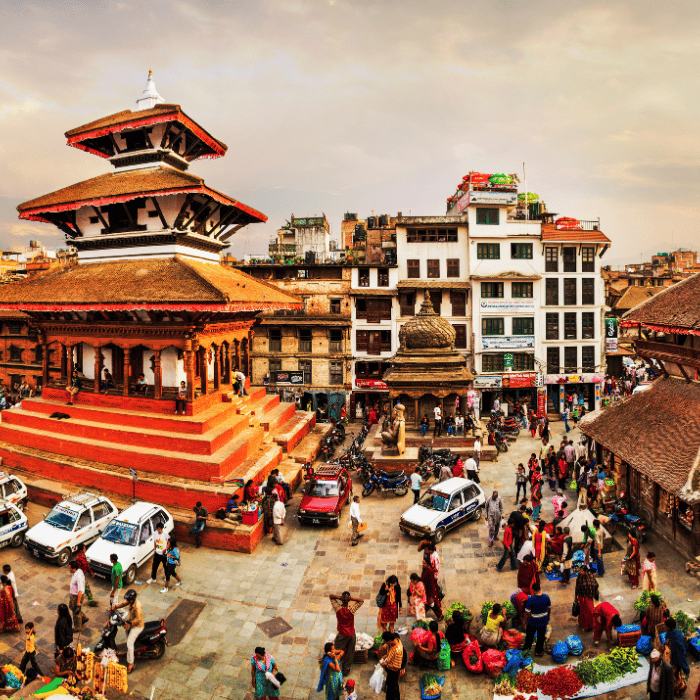
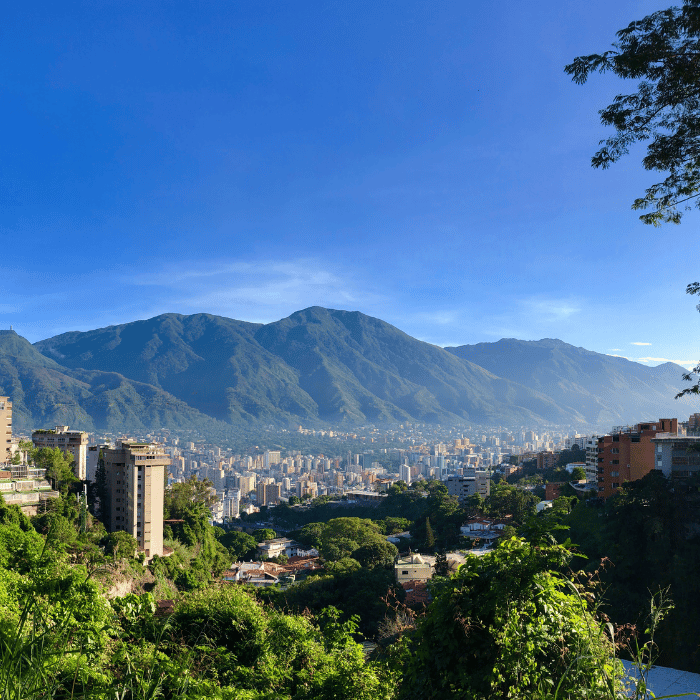
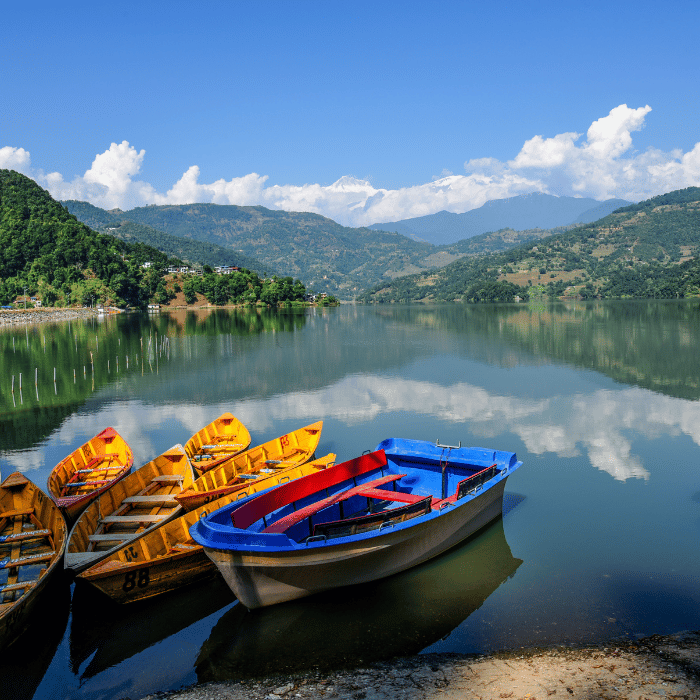
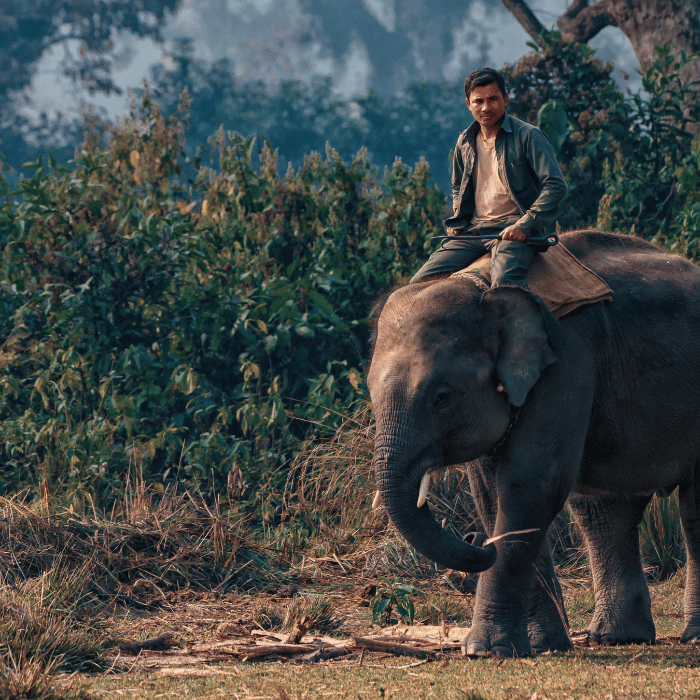
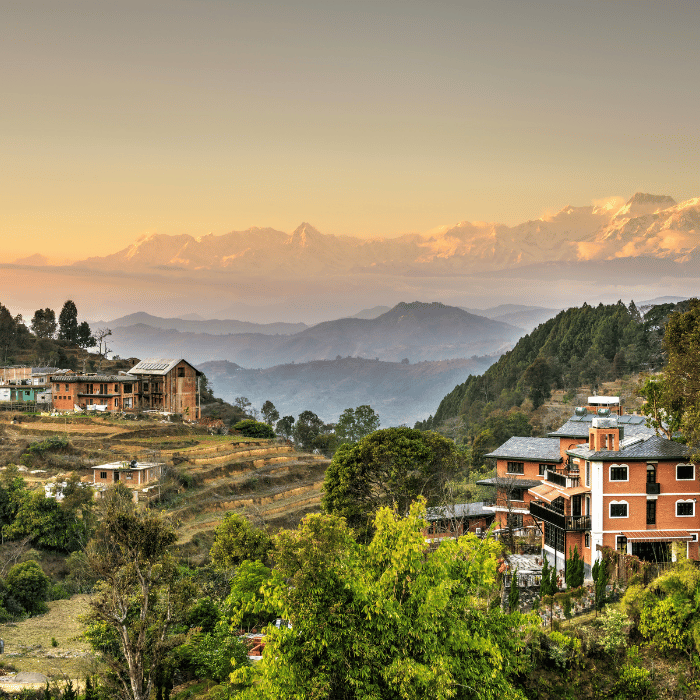


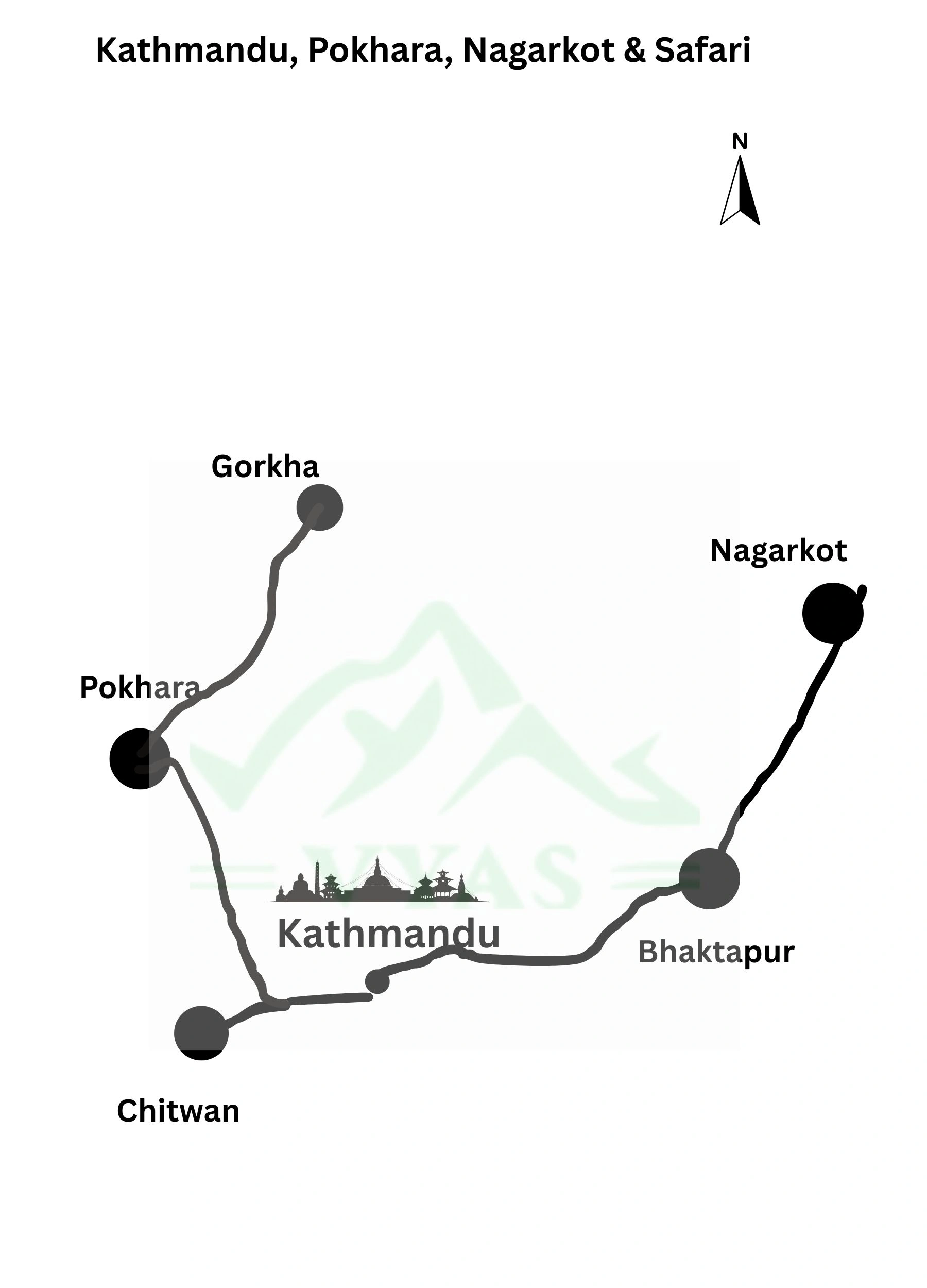


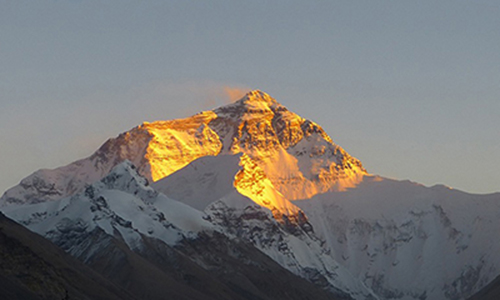
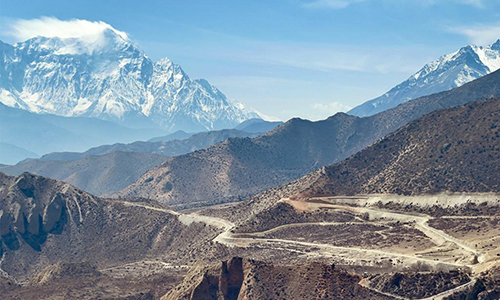
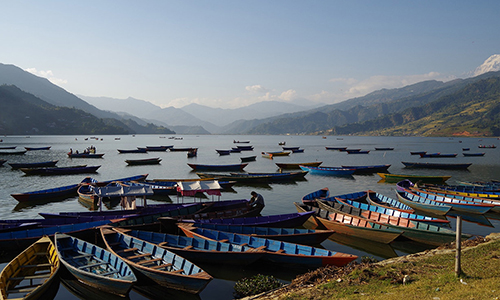
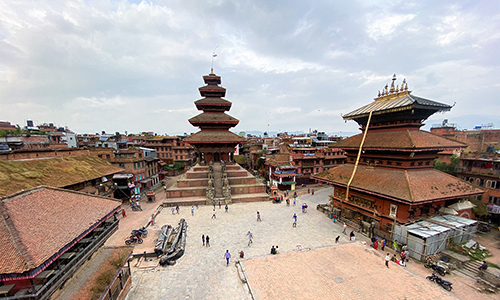
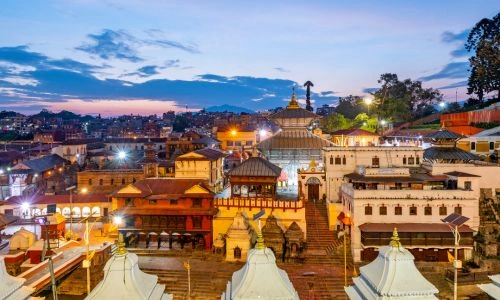
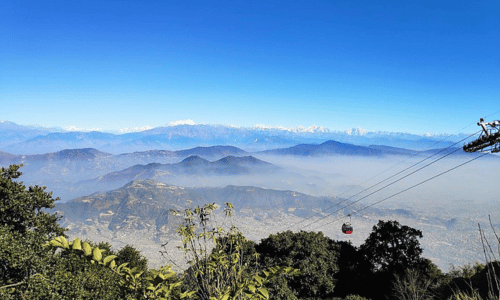
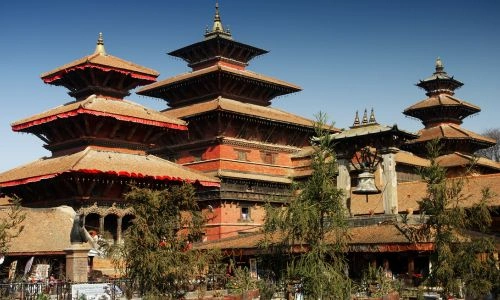
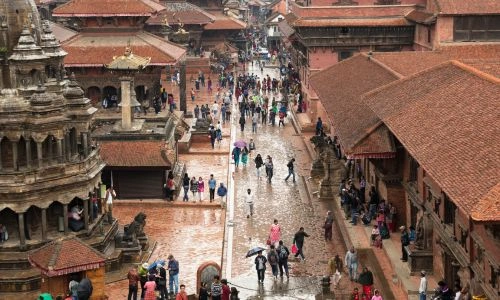

Jessica Brown
2025-06-16 13:36:37
The 7-day Nepal Golden Triangle Tour with Vyas Treks Nepal was absolutely perfect! From the cultural wonders of Kathmandu to the serene beauty of Pokhara and the stunning sunrise in Nagarkot, every stop was breathtaking. The jungle safari in Chitwan added adventure and excitement. The team took care of every detail—hotels, guides, transport—making the trip smooth and stress-free. Highly recommended!